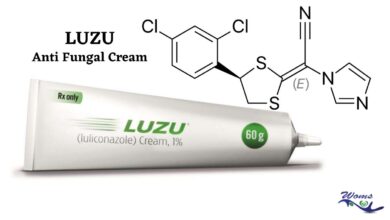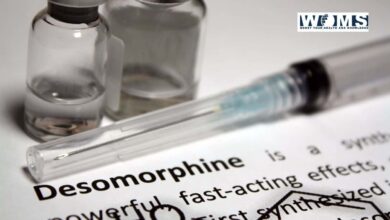Hyperbaric Oxygen Therapy

Hyperbaric oxygen treatment has now been suggested and utilized in a broad range of healthcare diseases for the past several decades, frequently without proper research proof of effectiveness and safety. As a result, there has been a variety of treatment skepticism about its use.
The Undersea and Hyperbaric Medical Society authorizes the administration of hyperbaric oxygen for several problems about which substantial credible research or well medical knowledge is believed to exist. Quick diagnosis is critical in these situations.
Overview Of Hyperbaric Oxygen Therapy
Inhaling pure oxygen in a pressured environment is considered hyperbaric oxygen therapy. Decompression sickness, a possible complication of scuba diving, can be treated using hyperbaric oxygen therapy.
Other conditions treated with hyperbaric oxygen therapy include serious infections, bubbles of air in your blood vessels, and wounds that may not heal as a result of diabetes or radiation injury.
Serious diseases, air bubbles in your bloodstream, and injuries that may not cure as a consequence of diabetes or exposure to radiation are all treated with hyperbaric oxygen therapy.
Serious diseases, air bubbles in your bloodstream, and injuries that may not cure as a consequence of diabetes or exposure to radiation are all treated with hyperbaric oxygen therapy.
Scuba and deep-sea divers who are impacted by the fast pressure difference in them are treated with hyperbaric oxygen therapy (HBOT). Inhaling 100 percent oxygen while being under high atmospheric pressures is known as hyperbaric oxygen therapy (HBOT).
HBOT is an ancient therapy that dates back to the 16th century. A British clergyman named Henshaw constructed and ran the very first well-known chamber. He constructed the domicilium, which was used to cure a variety of ailments. Air or pumps were used to pressurize or depressurize the chamber.
In 1879, the French surgeon Fontaine constructed a pressurized, portable clinical environment, continuing the concept of diagnosing clients with increasing pressure.
Hyperbaric oxygen therapy, or HBOT, is a therapeutic option for smoke inhalation, gangrene, persistent injuries, and illnesses caused by a lack of oxygenation in the cells.
If anyone wants to get this treatment, one will enter a special compartment where you will inhale pure oxygen at 1.5 to 3 above the normal air pressure. The objective is to provide adequate oxygen to the circulation for tissue regeneration and proper physiological function.
Therapy Has Cellular And Metabolic Benefits
- Angiogenesis and tissue repair are aided by this compound.
- Some anaerobes are killed, and species like Pseudomonas are prevented from growing.
- Inhibits clostridium alpha-toxin chemical generation.
- In chronically hypoxic organs, neutrophil-mediated microorganisms eradication is restored.
- Reperfusion injuries decrease immune cell attachment, reducing the production of proteases and oxidative stress that induce vascular constriction and inflammatory processes.
Hyperbaric Oxygen Therapy Uses
Hyperbaric oxygen treatment is used to cure cellular injury triggered by several persistent, non-healing illnesses, including:
- Radioactive harm (caused by radiation therapy)
- Infection of the bones
- Wounds on the skin
- Dermal flaps and grafts that have been compromised
- Wounds on the feet and legs of diabetics
Complications:
HBOT chambers are typically healthy when used for FDA-approved applications, and significant problems are uncommon. Due to the obvious increased pressure and oxygen content during HBOT, there are several possible dangers:
- Inflammation in the ears and sinuses
- Injury to the middle ear, especially tympanic membrane perforation
- Sight alterations that are just brief
- The collapse of the lungs (rare)
- The increased oxygen level can potentially cause fires, and that is why the FDA suggests treating at an approved hospital. HBOT chambers that haven’t been approved by the FDA and are placed in non – accredited institutions have exploded and caught fire.
Awareness Before Hyperbaric Oxygen Therapy
Before approaching a hyperbaric oxygen chamber for treatment, be aware of the following five truths:
- Do not show up for consultations sick: Whenever patients have a fever or another sickness, as with increased blood pressure, temperature, regular watery stool, or common cold sensations, your therapy may be extended.
- Specific drugs should be prevented before leaving the house: Some drugs may be affected by oxygen. Certain chemotherapies, a skin medicament used mostly for injuries, and a drug that reduces drinking in individuals with a diagnosis of alcohol dependence cannot be taken in conjunction with this procedure. Make an appointment with your doctor and other medical professionals ahead of time to explain any medications you’re taking.
- Plan on spending several hours there: Treatments in the hyperbaric oxygen chamber run around 2 hours and are usually planned once every day, 5 days a week. Just until therapy is finished, your doctor might recommend 30 or more treatments. The number of therapies you receive is frequently determined by how swiftly you respond to them.
- Initially, individuals might very well feel like they’ve been on an aircraft: Several individuals compare the beginning of this treatment to taking a plane flight. As the pressure inside the chamber rises, so does the pressure inside your ears, which can cause ear popping.
- A few possible adverse consequences to be conscious of. It’s usual to sense weariness following your therapy, as is discomfort in your ears or sinuses, or a sense of fluid accumulation in your ears. Being enclosed in the chamber could make you uncomfortable if you’re claustrophobic. Alteration insight and numbness in the fingers are possible adverse effects, but they normally go away with treatment. You may feel wobbly or dizzy as a consequence of the greater pressure and inhaling 100 percent oxygen. Convulsions or a collapsing lung may occur in very exceptional cases as a result of the treatment, which may speed up the onset of cataracts.
Do read: Cognitive Therapy: Is It Effective?
Conclusion
Hyperbaric oxygen is shown to be a valuable and pleasant kind of therapy in the twenty-first century for a large variety of eligible illnesses. Physicians, healthcare experts, sports therapists, sportsmen, and world-class trainers all agree that hyperbaric oxygen therapy (HBOT) is a safe and responsible method of improving injury healing, improving athletic productivity, and decreasing tiredness.
FAQs
What are hyperbaric oxygen therapy’s complications?
1. HBOT’s signs and symptoms and potential problems
2. Damage to the lungs.
3. The middle ear may fill with fluid or burst (rupture).
4. Damage to the sinuses
5. Nearsightedness, or myopia, is caused by changes in vision.
6. Pulmonary collapse, fluid in the lungs, and convulsions are all symptoms of oxygen intoxication.
How long does hyperbaric oxygen therapy take to start working?
In practice, meanwhile, everyone who requires oxygen therapy should plan on attending at least two appointments per week. Several patients report excellent benefits with just one therapy per day for five days, with a sum of 20-40 appointments.
Is there a limit to how long someone can live on oxygen therapy?
Long-term oxygen therapy patients without significant airway blockage have a dismal survival time (roughly 70 percent to year one, 50 percent to year two, and 43 percent to year three).




